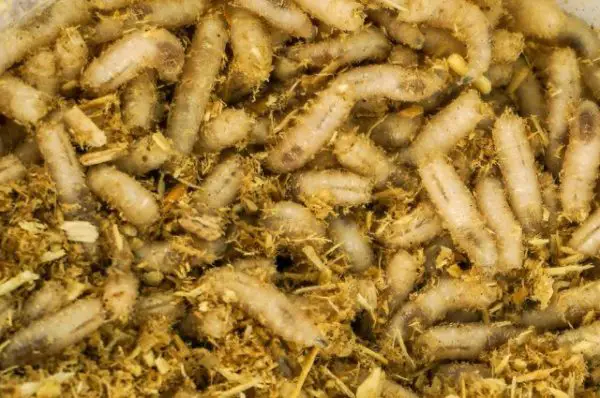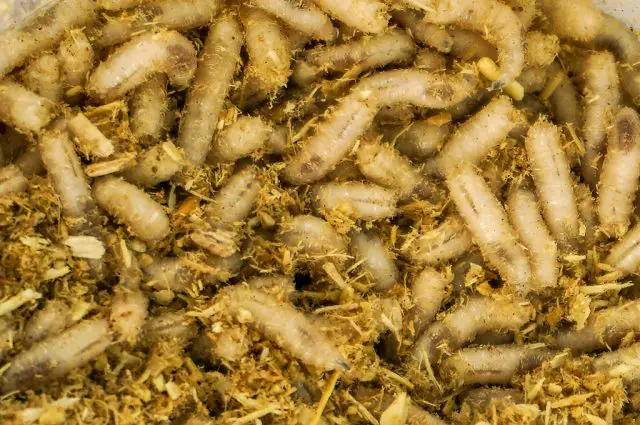While feeding Insectivores, make sure of the base diet, dusting, necessary supply supplements, freshwater, remove the uneaten insects & don’t overfeed.
Whether it’s a chameleon or a hedgehog, or a bearded dragon, insects are their staple foods. These insects contain most portions of their regular diets. That said, these insects must remain healthy so that your pet insectivore can thrive.
Most exotic pets live on these insects. Therefore, these insects’ quality plays a vital role in your pet insectivore’s growth. Although you can easily purchase these insects in canned form nowadays, there remain several uncertainties about purchasing.
If you want to be entirely sure about your pet insectivore’s health & growth, try to raise these insects at home.

What Is An Insectivore?
An insectivore is an animal that lives partially or totally on insects. Usually, some animals like hedgehogs, water dragons, skins, tegus, chameleons fall into the insectivore group. Also, lizards, snakes & other reptiles are a part of the insectivore group.
These insectivores’ main meals are varieties of insects like crickets, mealworms, giant mealworms, wax worms, cockroaches, fruit flies, silkworms, tomato hornworms, etc.
Available Insect Species
There are many types of insects available to feed your pet insectivore. However, the insects you should go for depends on your pet’s appetite. It’s advisable to add varieties while providing insects to the pet insectivore. Otherwise, they may get bored & which will significantly obstruct their growth.
For years, crickets have been the prime choice of insects for pet insectivores. Nowadays, you can get canned crickets.
You can even order them online. However, these commercially bred crickets pose a significant threat to the pet insectivores if served daily. Variation is a must for pet insectivores so that their mental & bodily growth gets proper stimulation.
Different varieties of mealworms are the second-best choice as feeder insects. Many types of mealworms like giant mealworms, king mealworms, waxworms, earthworms, silkworms, etc., are becoming popular as feeder insects.
Cockroaches are another great source of feeder insects. They can serve the appetite of any exotic pet insectivores handsomely. Usually, the bigger pet insectivores love feeding on cockroaches. Another favorite is the nutritious Dubia roaches that you can buy from https://www.topflightdubia.com/.
How To Feed Your Pet Insectivore
Remember the line, “You are what you eat.” That means the way you look after or allocate the insects will pave the way for your pet insectivore to grow.
So, follow the basics so that the feeder insects will get the most nutritious before serving them to your pet insectivore.
The Base Diet
First, if you raise insects at home, you need to put them in a container. While setting the box’s base, make sure that the insects will feed on the base substrate.
That said, you need to ensure the sound quality of these substrates. Also, add varieties to it so that your pet insectivores don’t become monotonous by devouring the same food every day.
Chicken Layer Pellets or Crumbles are some of the most popular base diets for insects.
Again, make sure the container gets enough moisture. You can keep the insects in a yogurt container with a damp sponge. Therefore, the moisture intake will remain optimum for these insects.
However, don’t make the base diet wet. Otherwise, molds will grow and kill the insects or, worse, make them toxic for your pets. You need to ensure a clean environment for feeding.
Necessary Supplements
Besides the base diet, you may need to add other supplementations to provide enough nutrients & varieties. Adding these supplements will also ensure moisture in the container.
You can try adding vitamin A enriched foods as they are a good supplement. Following foods can be used as supplements-
- Sweet potatoes
- Squash
- Carrots
- Spinach
- Kale
These foods are high in calcium and vitamin A. However, you need to replace the uneaten or old foods from the container. Serve the insects fresh foods weekly.
If the foods dry out, replace them quickly. Don’t skip on supplying fresh water always.
Gut Loading
Insects contain protein & fat heavily. However, they lack significantly in the calcium content. As a result, your pet insectivore will have a calcium deficiency.
To ease such conditions, you can feed the insects a diet rich in calcium before serving them to your pet insectivore. Keeping the insects’ digestive tracts full of calcium is vital.
If you feed them enough calcium-enriched foods but serve them after a while, chances are they will remain calcium deficient because these insects load off these nutrients quickly. So, when the ample time of consumption is over, serve them to your pet insectivore.
There are many commercial gut load diets available online & in the bait shops. You can buy them easily if you don’t want to go through the hassles of preparing a potent gut load.
Dusting
Dusting is another excellent approach to keep the insects rich in calcium & other vitamin contents. The main reason for dusting is that even with gut loading, your pet insectivore may not get enough calcium it requires.
If your pet is young & growing rapidly, dusting the insects with calcium or multivitamin powders is crucial. These young pet insectivores require more vitamin & calcium content than adult ones.
To apply the dusting method properly, take the insects in the dust bag & shake gently for a while. However, keep in mind that insects can groom off the dust within 30 minutes. So, dust only when you are ready to serve the insects to your pet insectivore.
For young pets, apply dusting once or twice a week. For adults, apply dusting once every three to four weeks. However, decrease dusting as your pet grows.
Things To Consider While Feeding
You need to look after certain things carefully for the healthy growth of your pet insectivore.
First, try to feed them live insects. Insectivores become eager when they see their prey moving. Allow the feeder insects to travel so that they stimulate your pet insectivore’s feeding behavior. Make sure you provide the right space for your pet.
Again, you should not leave the insects with your pet for an extended period. Remove them after 6-8 hours if your pet insectivore doesn’t eat them.
Final Thoughts
The insects can groom off after a while. So, if you keep feeding your pet insectivore groomed insects, its health will worsen soon. Don’t overdo feeding. Feed the young ones three times a day and the adults once a day, and they will remain healthy.



